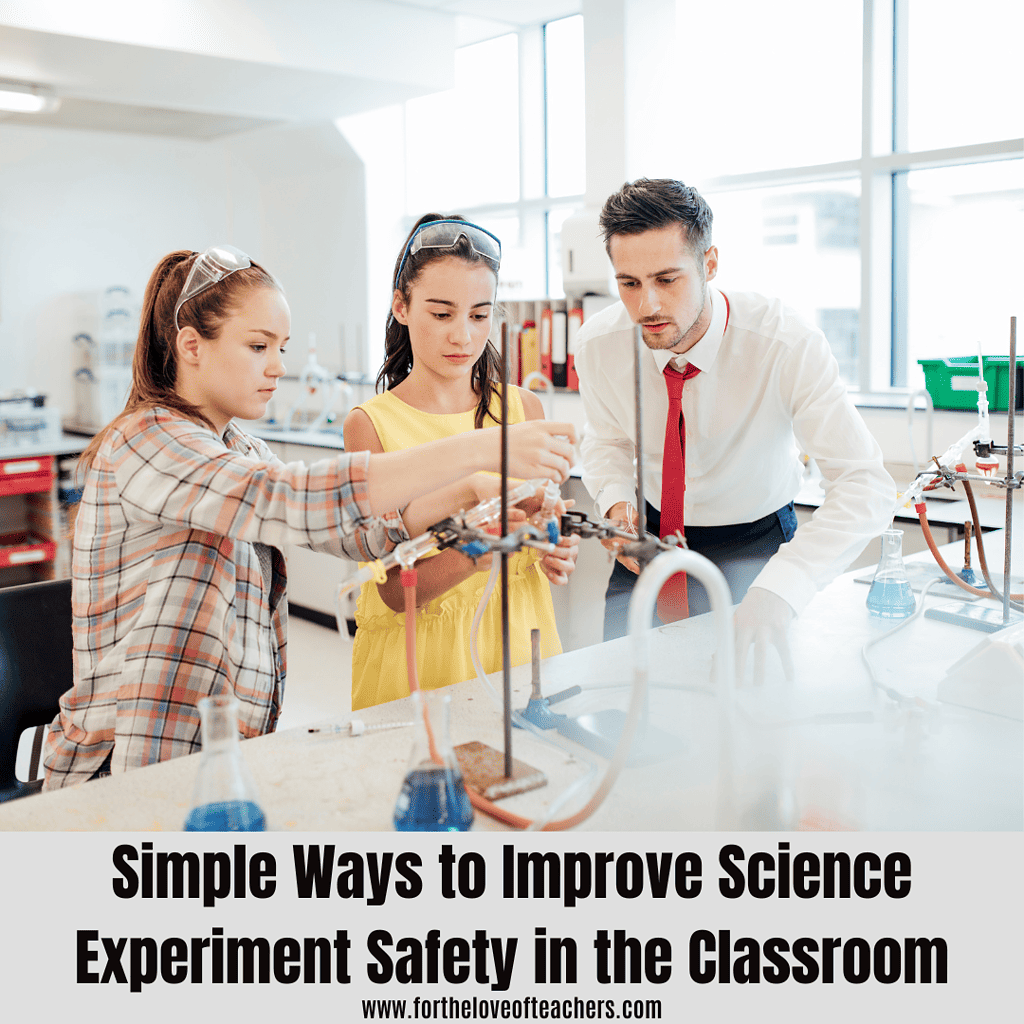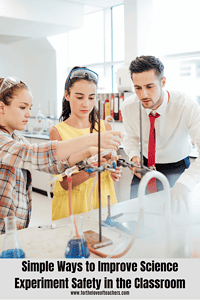Science experiments are an essential part of any classroom’s curriculum. They engage students, foster curiosity, and promote hands-on learning. It is crucial to prioritize safety during these experiments to ensure the well-being of both students and teachers. Teachers can create a safe environment for scientific exploration by implementing a few simple strategies. This article will explore ways teachers can make their classrooms safer while teaching science.
Prepare and Plan Ahead
One of the most effective ways to improve science experiment safety is through thorough preparation and planning. Teachers should carefully review each experiment, identifying potential hazards and ensuring they have the necessary materials and equipment. This includes reading and following all instructions provided with the experiment and ensuring students know the safety precautions.
First Aid Kits
Have fully stocked first aid kits readily available in the classroom. Train yourself and your students in basic first-aid techniques. Instruct them on how to handle minor injuries and when to seek professional medical assistance.
Conduct Risk Assessments
Performing a risk assessment is crucial in ensuring safety during science experiments. Teachers should evaluate the potential risks associated with each experiment and take appropriate measures to minimize them. This involves considering factors such as chemicals used, equipment involved, and any potential physical or biological hazards. Teachers can create a safer learning environment by identifying and addressing risks in advance.
Provide Proper Safety Equipment
Equipping students with the necessary safety gear is vital for their protection. Teachers should ensure that safety goggles, gloves, lab coats, and other protective equipment are readily available for students during experiments. Equally essential is educating students on the importance of wearing safety gear and how to use it correctly. This instills a culture of safety and responsibility among students.
Emphasize Laboratory Rules
Establishing clear and concise laboratory rules is paramount to maintaining a safe classroom environment. Teachers should communicate the rules and expectations to students before each experiment. This includes guidelines for behavior, handling equipment, and proper materials disposal. Reinforcing these rules consistently and discussing the potential consequences of not following them will help create a safe and respectful learning environment.
Promote Responsible Chemical Handling
Chemical safety is a critical aspect of science experiments. Teachers should educate students about the proper handling, storage, and disposal of chemicals. This includes explaining the potential hazards of each substance and teaching students how to read and understand safety labels. Emphasizing the importance of measuring and mixing chemicals accurately and avoiding cross-contamination can prevent accidents and ensure the well-being of all individuals involved.
Maintain Well-Maintained Equipment
Regular maintenance of laboratory equipment is crucial for both safety and accurate results. Teachers should inspect and maintain all equipment regularly to ensure its proper functioning. Equipment that shows signs of wear or damage should be repaired or replaced promptly.
Supervise Closely
Close supervision is essential during science experiments, mainly when working with younger students or potentially hazardous materials. Teachers should circulate among students, ensuring they follow safety procedures and use the equipment correctly. Promptly addressing unsafe behavior or situations will prevent accidents and promote a safer learning environment.
Create Emergency Plans
While preventive measures are crucial, teachers should also be prepared for emergencies. Developing emergency plans specific to science experiments can minimize risks and ensure a quick and effective response if an accident occurs. Teachers should know the location of safety equipment, such as fire extinguishers and first aid kits, and be familiar with emergency protocols. Regularly reviewing these plans with students will help them respond appropriately in an emergency.
Communication with Colleagues
Foster a culture of open communication with your fellow science teachers. Share safety tips, experiences, and best practices. Collaborate on developing safety protocols and guidelines for science experiments to ensure consistency across classrooms.
Proper Waste Disposal
Educate students about proper waste disposal practices. Teach them how to segregate and dispose of different types of waste, including chemicals, broken glass, and non-hazardous materials. Emphasize the importance of environmental responsibility and following local waste disposal regulations.
By implementing these simple strategies, teachers can significantly improve science experiment safety in the classroom. Prioritizing preparation, conducting risk assessments, providing safety equipment, establishing laboratory rules, promoting responsible chemical handling, maintaining equipment, close supervision, and emergency planning are vital steps toward creating a safe and conducive environment for scientific exploration.
Remember safety should always be the top priority when conducting science experiments. With proper planning and attention to detail, teachers can instill a love for science while ensuring the well-being of their students.
Science experiments can be exciting and transformative learning experiences for students. By creating a safe environment, teachers can maximize the educational benefits of these experiments while minimizing potential risks. So, let’s prioritize safety, follow proper procedures, and empower our students to become responsible scientists of the future.
By: Katherine Robinson, a writer for LOC Scientific
Related Posts:
Top 10 Easy Science Experiments For Kids
6 Easy Science Experiments Your Students Can Try at Home
Thanks for reading!
If you like it, then pin it!

Christine Weis is a passionate educator, classroom management coach, wife, and mom of two busy boys. She enjoys teaching, writing, and creating resources for teachers.







Safety is vital when it comes to science experiments, and there are several strategies to prioritize it. Preparation, risk assessments, safety equipment, laboratory rules, responsible chemical handling, equipment maintenance, emergency plans, and communication with fellow science teachers are crucial. Following these guidelines can help create a safe and effective learning environment for students.
Yes to all of this, especially educating the students first on how to handle and the risks of chemicals before anything else.
Fantastic post and I love your emphasis on safety in this one. Lab safety is among one of the most important things to be taught in schools. While they may never grow up to work in such an environment, it emphasis several key safety concerns to carry within in life. Chemicals and open flame being just two.
Safety is very important when doing a science experiments with a classroom full of curiosity, excited children. They are not thinking about to rick involve. great tips for teachers, they can spend more time planning the science experiment instead of thinking about how to keep the children safe.
Kids love to learn hands-on. Supervision is important for sure, even with the older kids.
My friend is a science teacher and she is always working on lab safety. It is good to have a safe teaching environment, but to also impress on kids how to be aware and mindful.
Hhhhmmmm….preparing and planning ahead is the safest bet we can make on any science experiment in the class! That way, we can control as much as we can, in that small environment.
These are great and helpful tips to follow to have a successful classroom or house experiment.
My friend is an educator and I think she needs to know more about this!
Great tips to follow for completing successful science experiments in our classroom! Thank you
Science experiments can often take a lot of time, energy, and prep work. But when you prepare in advance there is a high chance of it becoming successful.
Very helpful tips. As a teacher I want to give my students the opportunity to roll up their sleeves and get involved with science experiments in the classroom as much as possible.